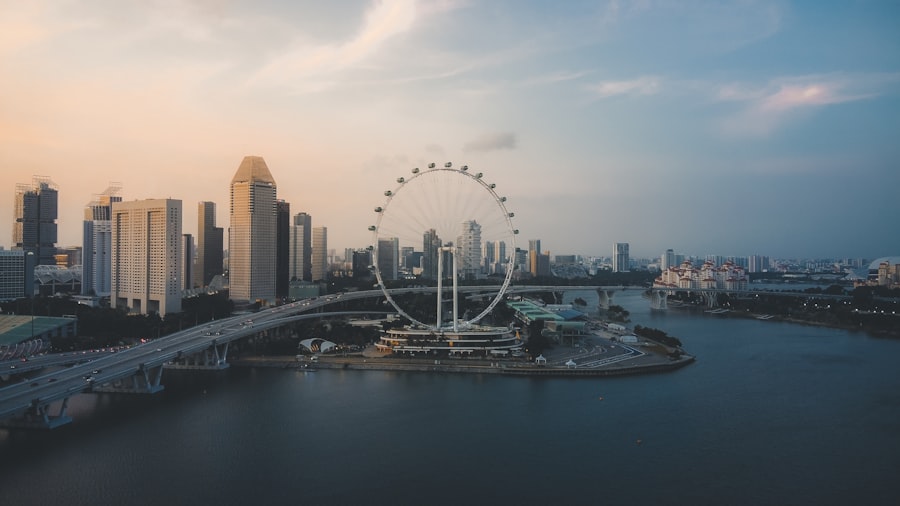Download links
How to install Soaring to New Heights: taya777 Wingsuit Flying APK?
1. Tap the downloaded Soaring to New Heights: taya777 Wingsuit Flying APK file.
2. Touch install.
3. Follow the steps on the screen.
Description
Wingsuit flying, a breathtaking blend of human ingenuity and the desire for flight, has a rich history that dates back to the early 20th century. The concept of gliding through the air with a suit designed to mimic the wings of a bird has fascinated adventurers and dreamers alike. The first recorded instance of a wingsuit was in 1912 when a daredevil named Franz Reichelt attempted to fly from the Eiffel Tower wearing a suit he designed himself.
Unfortunately, his endeavor ended tragically, but it marked the beginning of a journey that would evolve over the decades. As we moved through the 20th century, various inventors and thrill-seekers experimented with wingsuits, but it wasn’t until the late 1990s that wingsuit flying began to gain traction as a sport. Pioneers like Patrick de Gayardon and Jari Kuosma made significant advancements in wingsuit design, creating suits that allowed for greater control and stability in the air.
This period saw the transition from rudimentary designs to more sophisticated models, enabling enthusiasts to experience the exhilarating sensation of soaring through the sky. The sport began to attract a dedicated following, and wingsuit flying started to carve out its niche within the broader realm of skydiving.
Key Takeaways
- Wingsuit flying has a history dating back to the early 20th century, with pioneers like Clem Sohn and Rex Finney making significant contributions to the sport.
- taya777 Wingsuits have evolved over the years, with advancements in materials, design, and technology leading to greater performance and safety for wingsuit flyers.
- Training and skills required for wingsuit flying include extensive skydiving experience, physical fitness, and a thorough understanding of aerodynamics and flight mechanics.
- The thrill of wingsuit flying is accompanied by significant dangers, including the risk of collision, equipment malfunctions, and the need for split-second decision making in high-pressure situations.
- The community and culture of wingsuit flying is characterized by camaraderie, mentorship, and a shared passion for pushing the boundaries of human flight.
- The future of taya777 wingsuit flying holds promise for further technological advancements, increased safety measures, and continued growth in the global wingsuit flying community.
The Evolution of taya777 Wingsuits
Among the many brands that have emerged in the wingsuit industry, taya777 has distinguished itself as a leader in innovation and design. Founded by a group of passionate wingsuit flyers, taya777 has consistently pushed the boundaries of what is possible in wingsuit technology. Their commitment to quality and performance has made them a favorite among both novice and experienced flyers.
The evolution of taya777 wingsuits reflects not only advancements in materials and aerodynamics but also a deep understanding of the needs and desires of the wingsuit community.
However, as we delved deeper into the sport, we recognized the importance of refining these suits to enhance performance.
The introduction of advanced materials such as lightweight fabrics and improved stitching techniques allowed for greater durability and aerodynamics. Additionally, taya777 has focused on creating suits that cater to various flying styles, from beginner-friendly options to high-performance models designed for experienced flyers seeking adrenaline-pumping experiences. This evolution has not only improved safety but has also opened up new possibilities for creativity and expression in wingsuit flying.
The Training and Skills Required for Wingsuit Flying

Embarking on a journey into wingsuit flying requires more than just a desire to soar through the skies; it demands rigorous training and a commitment to mastering essential skills. Before we even think about donning a wingsuit, we must first become proficient in skydiving. Most experts recommend completing at least 100 jumps before attempting wingsuit flying, as this foundational experience is crucial for understanding freefall dynamics and parachute deployment.
Once we have established our skydiving skills, we can begin our wingsuit training. This phase typically involves ground school sessions where we learn about the mechanics of wingsuit flight, including body positioning, control inputs, and emergency procedures. We also practice in simulators or on the ground to develop muscle memory before taking to the skies.
As we progress, we will participate in tandem jumps with experienced instructors who guide us through our first flights in a wingsuit. This hands-on training is invaluable, as it allows us to gain confidence while receiving real-time feedback on our performance.
The Thrill and Dangers of Wingsuit Flying
| Aspect | Details |
|---|---|
| Speed | Typical speeds range from 100 to 160 mph |
| Altitude | Jumping from heights of 13,000 to 15,000 feet |
| Distance | Can glide for over 2 miles horizontally for every 1,000 feet of descent |
| Risk | Considered one of the most dangerous extreme sports |
| Training | Requires extensive training and experience |
Wingsuit flying is often described as one of the most exhilarating experiences one can have, offering a unique blend of freedom and adrenaline that few other activities can match. As we glide through the air, we experience an unparalleled sense of weightlessness and control, akin to flying like a bird. The breathtaking views from high altitudes add to the thrill, making every jump an unforgettable adventure.
For many of us, this feeling is addictive; each flight leaves us craving more. However, with great thrill comes inherent danger. Wingsuit flying is not without its risks, and we must approach it with respect and caution.
The sport requires precise control and awareness of our surroundings, as even minor mistakes can lead to serious consequences. Collisions with terrain or other flyers can occur if we are not vigilant, and improper deployment of our parachute can result in catastrophic outcomes. To mitigate these risks, we must continuously hone our skills, stay informed about safety protocols, and always jump with experienced partners who can provide support and guidance.
The Community and Culture of Wingsuit Flying
The wingsuit flying community is a vibrant tapestry woven from diverse backgrounds and experiences. As we gather at drop zones around the world, we find ourselves surrounded by fellow enthusiasts who share our passion for flight. This sense of camaraderie is one of the most rewarding aspects of being part of this community; we bond over our shared experiences, exchange tips and tricks, and celebrate each other’s achievements.
Whether we are seasoned veterans or newcomers taking our first jumps, there is an unspoken understanding that connects us all. The culture surrounding wingsuit flying is characterized by a spirit of adventure and exploration. Many of us are drawn to remote locations where we can experience breathtaking landscapes while pushing our limits.
Events such as wingsuit competitions and festivals further strengthen our community ties, providing opportunities for us to showcase our skills and learn from one another. These gatherings foster an environment of encouragement and support, allowing us to grow as flyers while forging lasting friendships that extend beyond the skies.
The Future of taya777 Wingsuit Flying

As we look ahead to the future of taya777 wingsuits, it is clear that innovation will continue to play a pivotal role in shaping the sport. With advancements in technology and materials science, we can expect even more refined designs that enhance performance while prioritizing safety. Taya777 is committed to staying at the forefront of these developments, constantly seeking feedback from the community to ensure their products meet our evolving needs.
Moreover, as wingsuit flying gains popularity worldwide, we anticipate an increase in accessibility for aspiring flyers. Taya777 is dedicated to promoting education and training programs that will help newcomers safely enter the sport while fostering a culture of responsibility among experienced flyers. By nurturing this growth, we can ensure that wingsuit flying remains an exhilarating yet safe pursuit for generations to come.
In conclusion, wingsuit flying is not just a sport; it is a way of life that brings together individuals from all walks of life who share a common dream: to fly. Through its rich history, technological advancements like those seen in taya777 wingsuits, rigorous training requirements, thrilling experiences tempered by inherent dangers, and a supportive community culture, wingsuit flying continues to captivate our hearts and minds.
If you’re interested in maximizing your game with Taya777 online sports, you may also enjoy reading about the adrenaline-pumping world of wingsuit flying. Check out this article on maximizing your game with Taya777 online sports to learn more about pushing your limits and experiencing the thrill of extreme sports like wingsuit flying.
FAQs
What is wingsuit flying?
Wingsuit flying is a skydiving discipline where participants wear a special jumpsuit that adds surface area to the human body, enabling a significant increase in lift. This allows the participant to glide through the air at a slower descent rate than traditional skydiving.
How does a wingsuit work?
A wingsuit works by creating additional surface area with fabric between the arms and body, as well as between the legs. This increased surface area allows the participant to generate lift and glide through the air, rather than simply free-falling.
What are the risks of wingsuit flying?
Wingsuit flying carries inherent risks due to the high speeds and proximity to the ground or other objects. Accidents can occur due to collisions, loss of control, or failure to deploy the parachute in time. Proper training, equipment, and adherence to safety protocols are essential for minimizing these risks.
What kind of training is required for wingsuit flying?
To participate in wingsuit flying, individuals must first become experienced skydivers and obtain a minimum number of skydives before undergoing specialized wingsuit training. This training covers the unique techniques and safety considerations specific to wingsuit flying.
Where can one go wingsuit flying?
Wingsuit flying is typically conducted at specialized drop zones or skydiving centers that offer the necessary facilities and support for this discipline. These locations are often in scenic areas with suitable terrain for safe landings.





